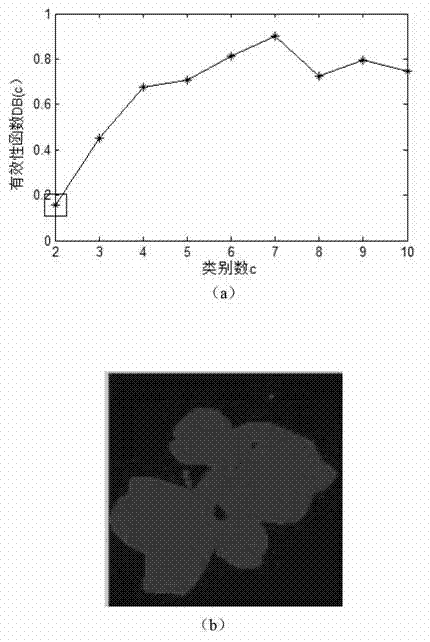Self-adaptive image segmentation method based on quick global K-means
An image segmentation and K-means technology, applied in the field of image processing, can solve problems such as inapplicable datasets with a large amount of data, the technology is not widely recognized, and the amount of calculation is large, so as to reduce the space complexity and time complexity, and effectively The effect of adaptive segmentation and accurate segmentation results
- Summary
- Abstract
- Description
- Claims
- Application Information
AI Technical Summary
Problems solved by technology
Method used
Image
Examples
Embodiment Construction
[0027] refer to figure 1 , the specific implementation steps of the present invention are as follows:
[0028] Step 1, input an image to be segmented with a size of R×Q, the total number of pixels is n, n=R×Q, set the search range [c min ,c max ], and let c=c min .
[0029] Step 2: For each pixel of the image to be segmented, perform 3-layer wavelet transformation with an M×M window to extract the texture feature x j ,j=1,...,n.
[0030] Step 3, use the improved fast global K-means algorithm to extract the texture feature x j ,j=1,...,n are clustered into c classes, and the cluster center V={v 1 ,v 2 ,.., v c},v i is the cluster center of each class, i=1,...,c.
[0031] 3a) Calculate the mean value of all texture features and use it as the initial cluster center w of the first class 1 , Where n is the total number of pixels in the image;
[0032] 3b) Set the number k of initial cluster centers: k=1;
[0033] 3c) Determine whether k+1 is greater than the number o...
PUM
 Login to View More
Login to View More Abstract
Description
Claims
Application Information
 Login to View More
Login to View More - R&D
- Intellectual Property
- Life Sciences
- Materials
- Tech Scout
- Unparalleled Data Quality
- Higher Quality Content
- 60% Fewer Hallucinations
Browse by: Latest US Patents, China's latest patents, Technical Efficacy Thesaurus, Application Domain, Technology Topic, Popular Technical Reports.
© 2025 PatSnap. All rights reserved.Legal|Privacy policy|Modern Slavery Act Transparency Statement|Sitemap|About US| Contact US: help@patsnap.com



